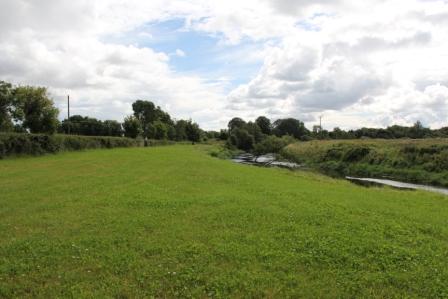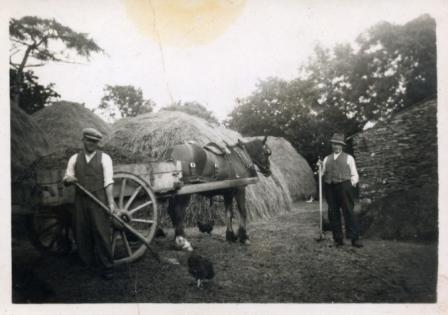One of the most interesting names that crops up all around the County is ‘Slang’ or ‘The Slang’. This usually refers to a strip of land, often marshy and often near a river. This name crops up all over the County, with over 200 occurences. Research indicates that this is a Hiberno English word that originated in the West of England.
T.P. Dolan’s Dictionary of Hiberno-English gives descriptions of ‘Slang’ as follows – “A narrow strip of land beside a river”, “a long narrow piece of fenced in grazing land on a farm”, “an awkward or irregularly shaped field”, “a narrow piece of land running up between other and larger divisions of ground; a long and narrow strip of ground; Hogan notes: a west of England word.”[1]. There does not appear to be any reference to ‘Slang’ in the three volumes on Irish Names of Places by P.W. Joyce.[2] A History of English Field Names by John Field[3] says that “Slang frequently signifies a narrow piece of land beside a road or sometimes a river, though it may also be found away from such features”

An important finding has been a small range of particular field names that only occur in certain parts of the County. ‘The Craft’ is a field name that only seems to occur in the south of the County (Ballivor, Longwood, Enfield, Rathmolyon, Ballinabrackey and Dunboyne areas). This name is usually associated with a small field close to the yard, what might be called a ‘paddock’ in other areas. Like other names sometimes the field is just known as ‘The Craft’ while in other cases there are names like Corner Craft, Bush Craft, Doran’s Craft or Bull Craft.

The origin of this name is not known for certain, it seems likely that it comes from the word ‘Croft’ [enclosed field or small field of unknown etymology now most familiar in Scotland].
Of course ‘The Haggard’ crops up regularly as a field name. This is almost always an area adjacent to the farm yard or what once was a farm yard. Traditionally this was an enclosed area on a farm for stacking hay, grain or other fodder. There is a range of theories on the etymology of the word ‘Haggard’. Collins English Dictionary describes Haggard as follows – “Haggard – (in Ireland and the Isle of Man) – an enclosure beside a farmhouse in which crops are stored. Related to old Norse Heygarthr, from hey hay + garthr yard.” [4] Many believe that this word may have a Scandanavian or Norse origin.

‘Kesh’
‘Kesh’ is a field name that seems to, mainly but not exclusively, occur in the northern part of the county. It appears to indicate a stream or drain crossing or a field that had a stream crossing in years gone by. They are regularly found in areas with bog land. The project has been advised that Kesh is almost certainly from the Irish word Ceis meaning a wattled causeway or wickerwork causeway. It can be a temporary bridge made of branches over a drain or wet patch in a bog.
P.W. Joyce states: “A kish or kesh, in Irish ‘Ceis’, is a kind of causeway made of wickerwork, and sometimes of boughs of trees and brambles, across a small river, a marsh or a deep bog. The word means primarily wicker or basket work. These wickerwork bridges or kishes, were formerly very common in every part of Ireland, and are so still in some districts” [5] .
Some field names and descriptions throw up interesting language and words not used much anymore. A few incidences of – “The field Fornint / Forenth the Door” have occured, this field name refers to the field in front of the house / door. This field name has arisen in different parts of the County and is also known to be used in other Counties such as Offaly.
Mearing / Mearning / Mearn
Mearing / Mearning / Mearn are also words that crop up in field names and descriptions. Most farmers and older rural people will know the meaning of these terms but as they are not used much anymore, younger people may not know what they mean. “The field or ditch mearing separates neighbouring farms. It is the boundary ditch or fence between two farms.”[6]
